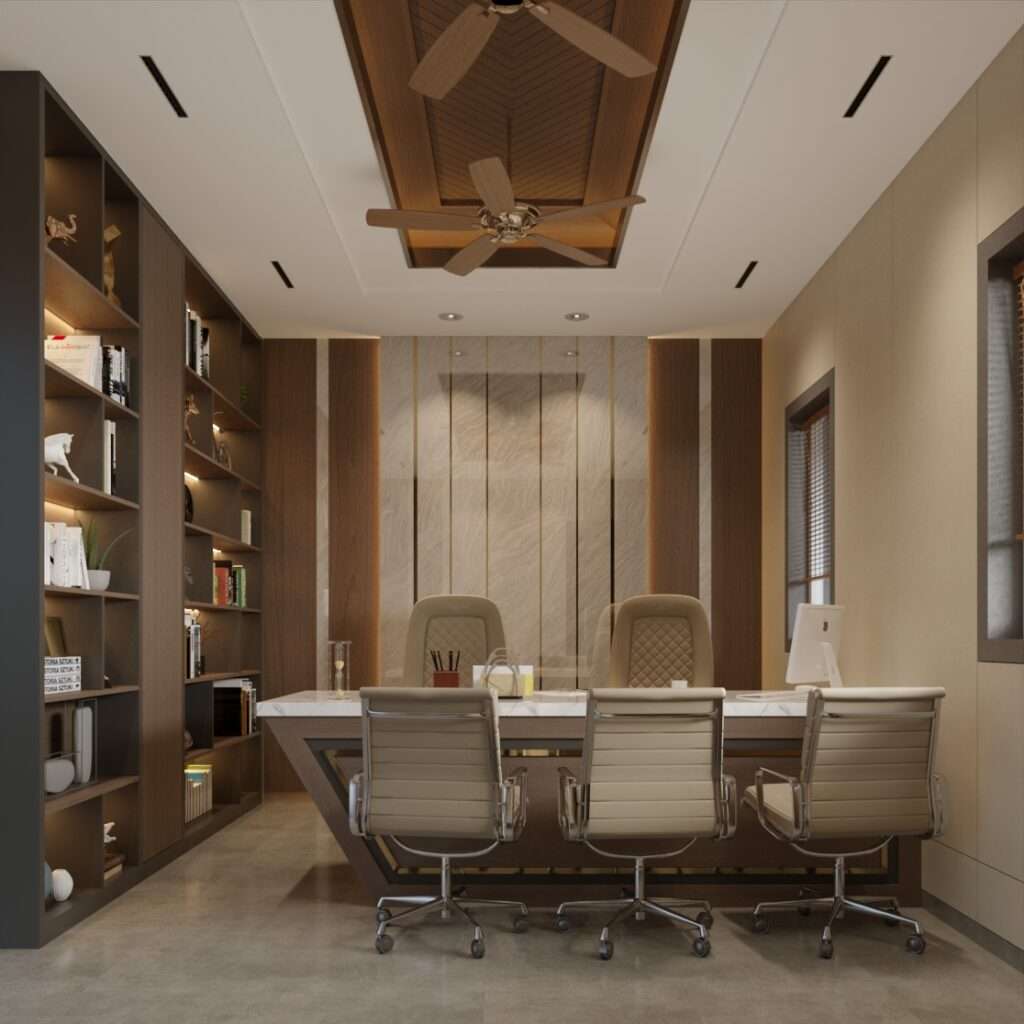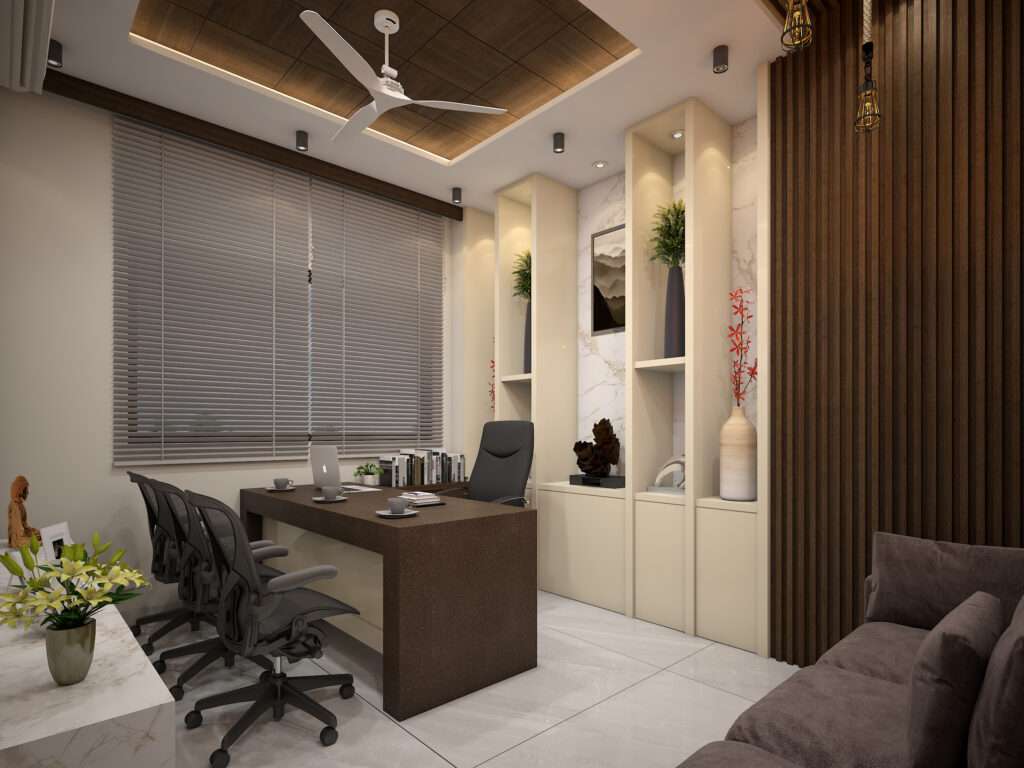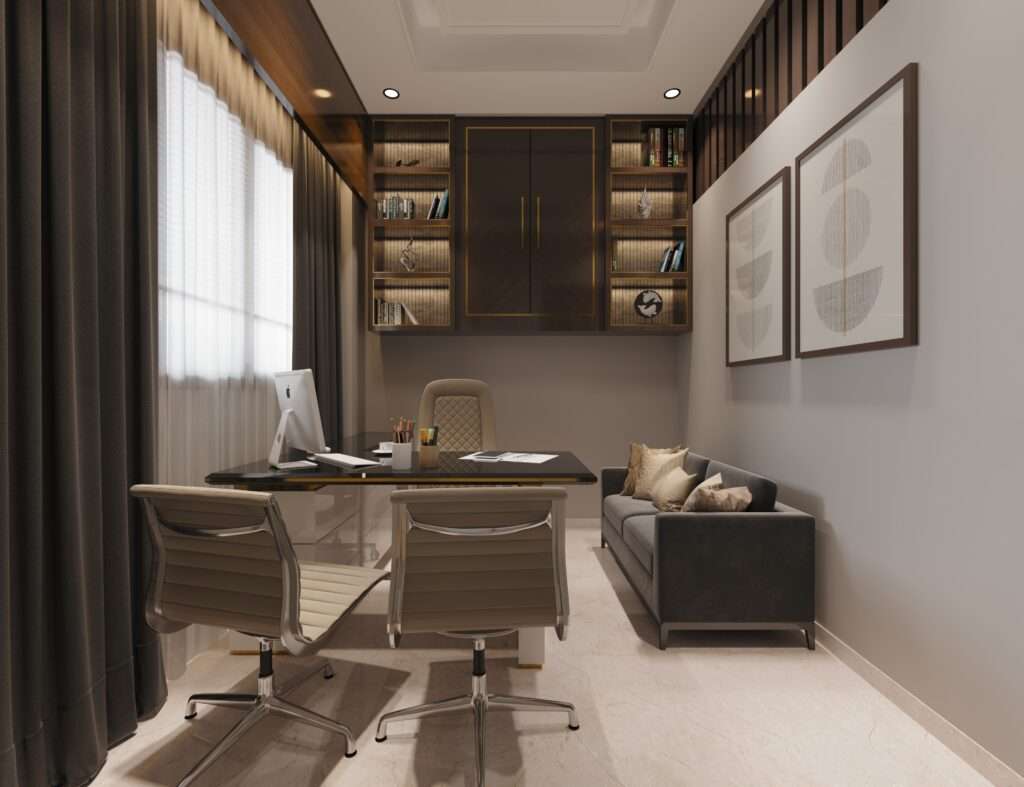Office
” Create a beautiful, serene workspace that helps you stay productive and motivated. “
Office interior design is the practice of designing workplaces that are conducive to maximizing not only productivity but also the health, safety, well-being, and performance of employees. It is about creating spaces that are functional and provide a setting for success .




Introduction
In the present fast-paced corporate world, the significance of a very much planned office space is more significant. An insightfully made office plan has the ability to impact efficiency, lift representative confidence level, and make a positive work culture.
Every aspect of office design has a significant impact on the atmosphere as a whole, and this includes everything from the layout and selection of furniture to color schemes and lighting.
In this blog, we will investigate the vital components of office inside plan and give pragmatic bits of knowledge and tips to making a charming and utilitarian work area.
Significance Of Office Design
The importance of office interior design extends beyond purely aesthetic considerations. It can altogether influence worker prosperity, fulfillment, and execution.
Very much planned spaces advance inventiveness, cooperation, and development while additionally tending to pragmatic necessities like solace, ergonomics, and effective space use.
Businesses can take advantage of the power of office interior design to achieve success.
Vital Space Arranging and Format
A well-designed office is built on the foundation of effective space planning. It entails taking into account the traffic flow, the functional requirements of various departments, and designing a layout that encourages collaboration and productivity.
A dynamic and adaptable work environment can be created through the open-plan design, flexible workstations, and designated areas for individual focus and teamwork.
Integrating Regular Components
In recent years, a lot of attention has been paid to biophilic design, which incorporates elements from nature into the office environment.
In addition to enhancing aesthetics, incorporating organic materials, indoor plants, water features, and natural light enhances employee well-being, reduces stress, and improves air quality. The workplace benefits from a sense of calm and renewal provided by natural elements and vegetation.
Picking Tones and Lighting
Because different colors can elicit a variety of feelings and states of mind, color psychology plays a crucial role in office design. Accent walls in vibrant colors, calming blues, or energizing yellows can set the mood for different areas of the office.
Likewise, satisfactory lighting, both normal and counterfeit, is significant for making a useful and agreeable work area. Employee satisfaction and performance are aided by task-specific illumination, glare reduction, and appropriate lighting levels.
Furniture
Office furniture ought to find some kind of harmony among style and usefulness. A crucial factor is ergonomics, the science of designing furniture and equipment for maximum comfort and efficiency.
Movable work areas and seats, steady seating, and ergonomic frill advance great stance, diminish outer muscle issues, and improve representative prosperity. The brand identity and culture of the company can also be reflected through thoughtful furniture selection.
Breakout and collaborative spaces
Fostering teamwork, creativity, and employee interaction requires the creation of designated breakout and collaborative spaces. Open lounges, rooms for brainstorming, and informal meeting spaces are examples of these areas.
Organizations can encourage cross-departmental collaboration and creativity by providing employees with a variety of work and social settings.
Branding and Personalization
For employees to develop a sense of self-identity and pride, it is essential to incorporate aspects of the company’s culture and branding into the office environment. The organization’s values and mission can be emphasized through customized artwork, signage, and brand colors.
Personalization additionally stretches out to individual workstations, permitting representatives to customize their space inside the more extensive plan system.
Innovation Combination
In the digital age of today, technology integration must be considered in office interior design. Essential aspects include effective cable management, charging stations, and intelligent lighting and climate control systems.
Technology can be strategically placed to ensure a smooth working environment and increase productivity.
Conclusion
Office interior can possibly change a simple work area into a motivating climate that encourages efficiency, coordinated effort, and representative prosperity.
Businesses can design an office that embodies their values and drives success by strategically planning the layout, incorporating natural elements, selecting appropriate colors and lighting, focusing on ergonomics, creating collaborative spaces, reflecting company branding, and integrating technology.
Putting resources into a very much planned office is an interest in store for the association and its most important resource — its employees.
